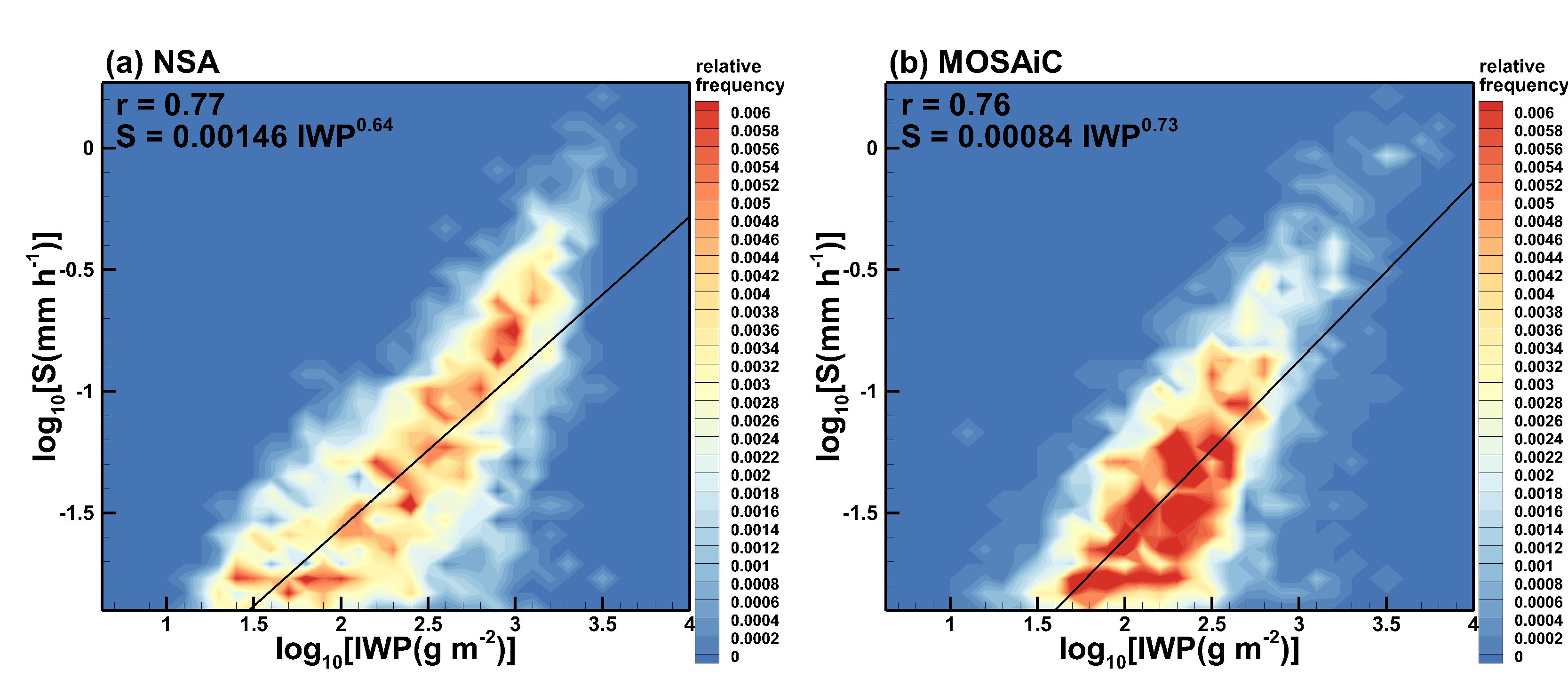Statistical relations among parameters of the water cycle in the arctic atmosphere
Submitter:
Matrosov, Sergey — University of Colorado
Area of research:
Cloud Processes
Journal Reference:
Science
Earth’s water cycle is a complex system, and its characteristics are modified by climate change. Evaporation, water vapor condensation, and precipitation are important processes of the water cycle. Modeling these processes is especially challenging in the Arctic, where climate changes are amplified. Remote-sensing retrievals of water cycle parameters allow for correlation analysis of the interrelations among different components of the water cycle and for developing corresponding observationally based statistical relations that can be then used for model assessment activities.
Impact
Observationally based relations among precipitation near the ground, columnar water vapor amount, and integrated cloud content characterize the moisture conversion efficiency in the atmosphere. These relations, which were obtained in this study during snowfall periods, provide valuable information for evaluations of how well different numerical weather prediction models handle specific moisture transformation processes.
Summary
Observations collected during cold-season precipitation periods at Utquagvik, Alaska and at the Multidisciplinary Drifting Observatory for the Study of Arctic Climate (MOSAiC) are used to statistically analyze the relations among the atmospheric water cycle parameters, including columnar supercooled liquid and ice amounts (expressed as liquid-water and ice-water paths, i.e., LWP and IWP), integrated water vapor (IWV), and near-surface snowfall rate. Data come from radar and radiometer-based retrievals and from optical precipitation sensors. While the correlation between snowfall rate and LWP is rather weak, correlation coefficients between radar-derived snowfall rate and IWP are high (~0.8), which is explained, in part, by the generally low LWP/IWP ratios during significant precipitation. Correlation coefficients between snowfall rate and IWV are moderate (~0.45). The results from the Alaska and MOSAiC sites are generally similar. These results are not very sensitive to the amount of time averaging (e.g., 15-min averaging versus daily averages).


